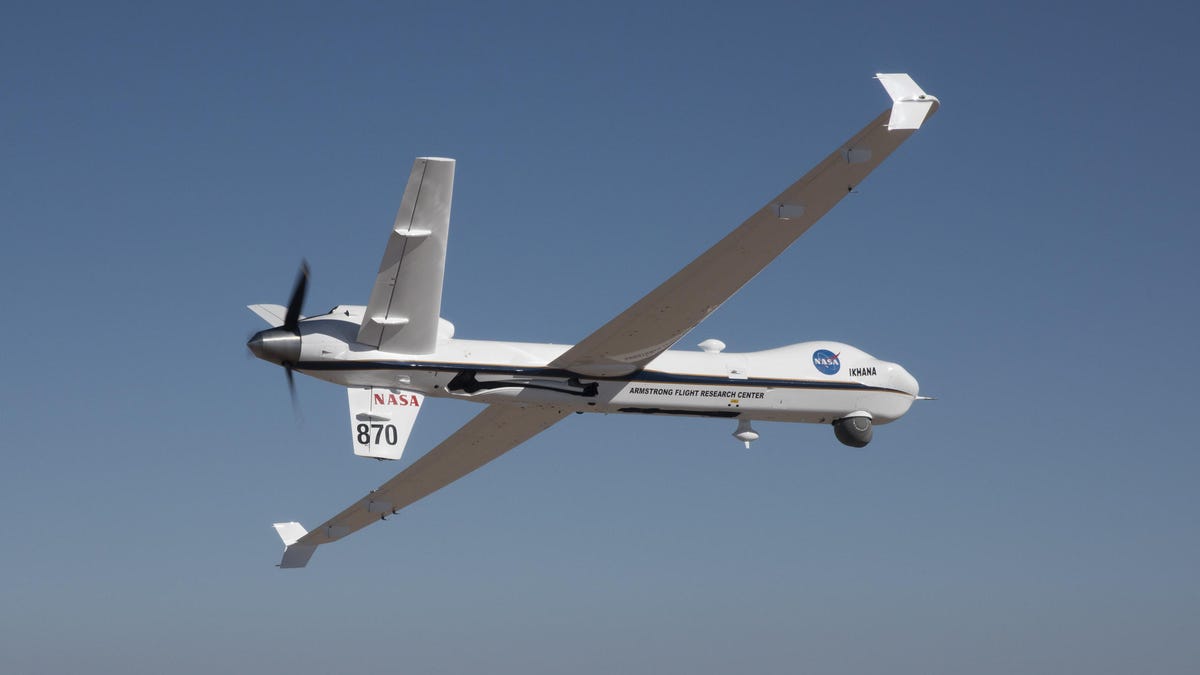NASA unmanned Ikhana aircraft makes history flying without escort
Look, ma, no chase plane. NASA's remotely piloted aircraft flies solo through public airspace.

NASA's remotely piloted Ikhana aircraft flying in preparation for its first mission in the National Airspace System without a safety chase aircraft.
This isn't your grandma's drone. NASA 's Ikhana aircraft looks like a full-sized airplane, but there's something important missing. There's no pilot on board.
The Ikhana passed a milestone for unmanned aircraft on Tuesday by flying in public airspace without a safety chase plane for the first time. NASA got special permission from the Federal Aviation Administration to conduct the test flight.
Engineers at NASA's Armstrong Flight Research Center monitor the remotely-piloted Ikhana aircraft from a mission control room.
"This historic flight moves the United States one step closer to normalizing unmanned aircraft operations in the airspace used by commercial and private pilots," NASA says.
The plane is remotely operated by a pilot on the ground and is equipped with a host of high-tech systems that help it navigate and avoid mid-air collisions or close calls. The detect-and-avoid technologies include an airborne radar system and a satellite positioning system that broadcasts Ikhana's position to other planes.
Ikhana took off from Edwards Air Force Base in California and cruised at an altitude of 20,000 feet (6,100 meters) through airspace shared with commercial flights. It later descended to a lower altitude shared with general aviation flights.
NASA sees a future for unmanned aircraft tackling forest fires and providing emergency search and rescue services. The space agency also expects the technology could be scaled down and used in general aviation aircraft.
Ikhana is part of NASA's Unmanned Aircraft Systems Integration in the National Airspace System (UAS-NAS) project, which is working on safely integrating remotely piloted aircraft into the same airspace as human-piloted ones.

